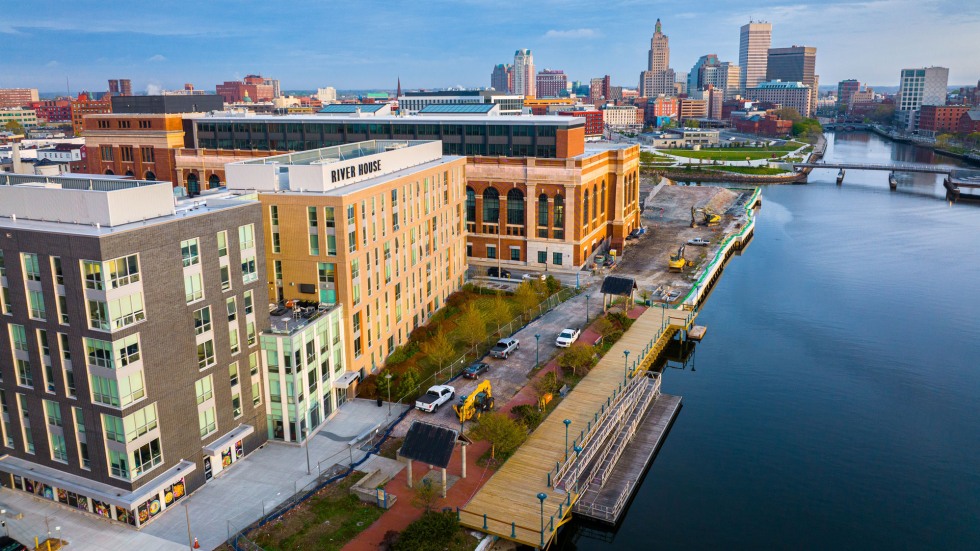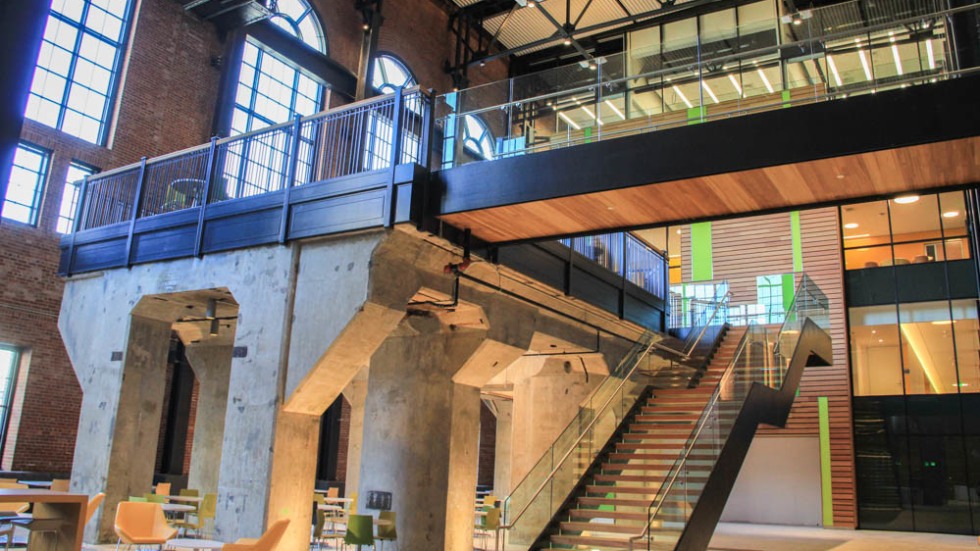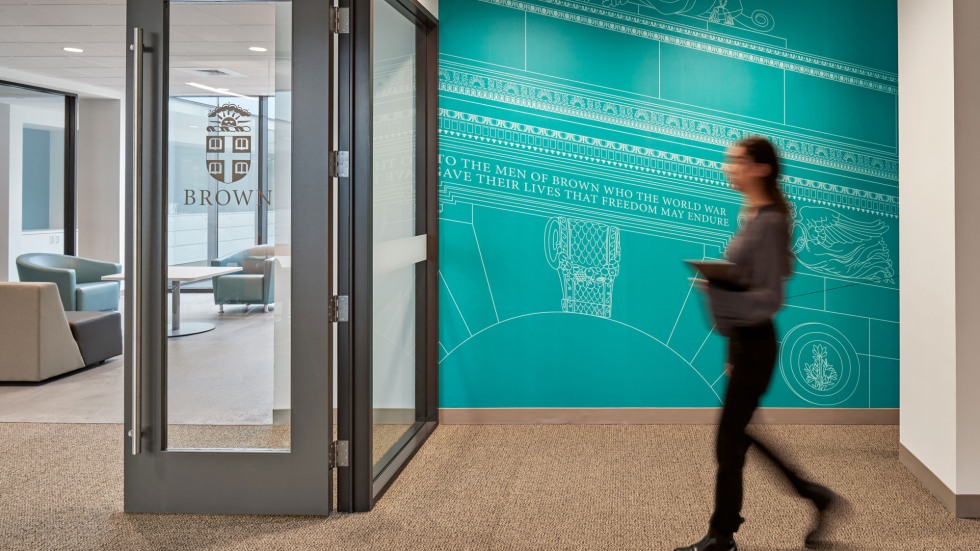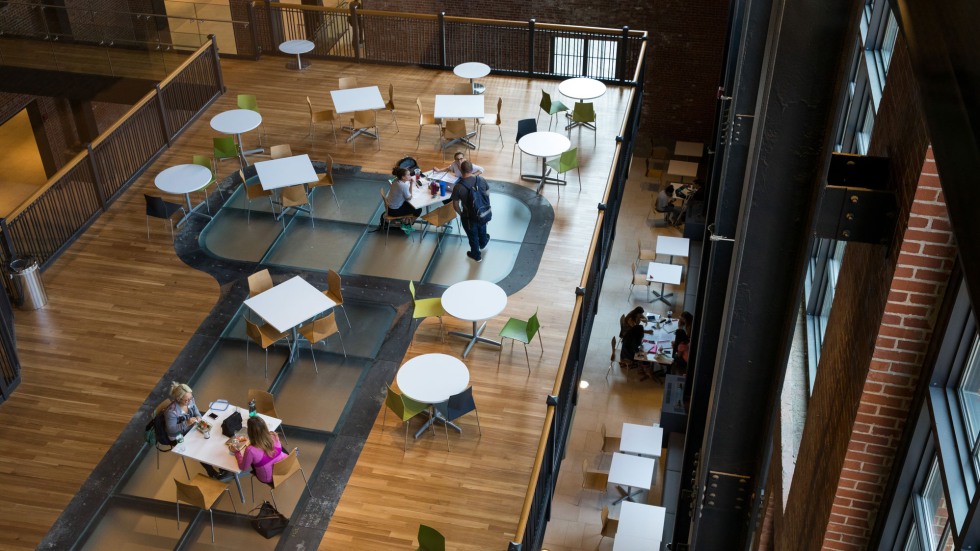PROVIDENCE, R.I. [Brown University] — As part of its long-term commitment to investing in the economic and cultural vitality of Providence’s Jewelry District, Brown University has purchased the share of South Street Landing it has leased since the formerly vacant power station opened in its redeveloped form in 2017.
The University space includes 136,000 square feet on floors three, four, five and six, where nearly 500 Brown employees from a range of administrative units work.
Brown closed on the $54 million purchase on Tuesday, Dec. 12, executing a purchase option built into its original 15-year lease. The University acquired the space from CV South Street Landing, a subsidiary of real estate investment trust Ventas, which has owned South Street Landing since 2017. For the University’s portion of the building, Brown will directly assume the existing tax stabilization agreement in place with Ventas, ensuring continuity of tax revenue to the city.
The purchase adds to $341 million in prior Brown investments in the Jewelry District, which have sparked public-private partnerships that led to the development of the neighborhood’s most prominent projects. This includes becoming the anchor tenant in South Street Landing at the project's inception, as well as helping to attract Wexford Science & Technology, Ventas, Ancora L&G, the Cambridge Innovation Center and other partners to the state.
Russell Carey, executive vice president for planning and policy at Brown, said the University's ongoing focus on strategic growth in the Jewelry District has helped to revitalize a once-quiet neighborhood, bringing new life into the surrounding community. Nine administrative units have assignments in South Street Landing currently, and with hybrid work patterns leading to staggered in-office and remote days for people in many departments, the University is configuring shared space for additional administrative units in the coming months.
“Purchasing our space in South Street Landing — and optimizing it even further with an expanding number of employees assigned to the building who work hybrid schedules — will further enhance the neighborhood's vibrancy by boosting street-level activity,” Carey said. “As we consider Brown’s investments and footprint in the Jewelry District, we continue to do so with city and state goals in mind, including significant promise for increased economic activity.”



